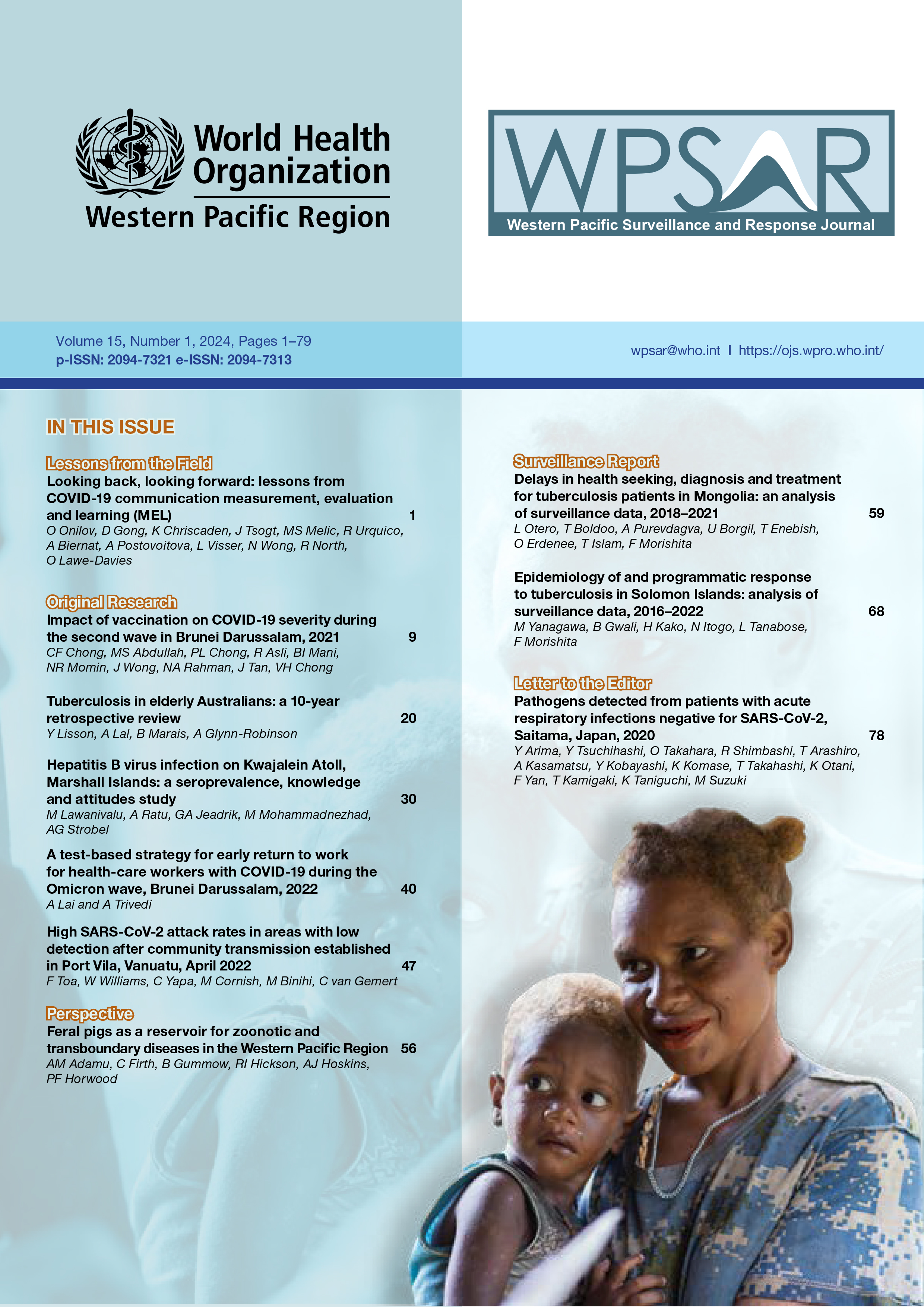Delays in health seeking, diagnosis and treatment for tuberculosis patients in Mongolia: an analysis of surveillance data, 2018–2021
DOI:
https://doi.org/10.5365/wpsar.2024.15.1.1074Keywords:
tuberculosis, health care seeking behavior, delayed diagnosis, treatment delay, public health surveillance, MongoliaAbstract
Early diagnosis and treatment of infectious tuberculosis (TB) is essential to the attainment of global targets specified in the End TB Strategy. Using case-based TB surveillance data, we analysed delays in health seeking, diagnosis and treatment among TB patients in Mongolia from 2018 to 2021. We calculated the median and interquartile range (IQR) for “diagnostic delay”, defined as the time from symptom onset to diagnosis, subdivided into “health-seeking delay” (time from symptom onset to first visit to a health facility) and “health facility diagnostic delay” (time from first health facility visit to diagnosis), and for “treatment delay”, defined as the time from diagnosis to start of treatment. We also calculated “total delay”, defined as the time from symptom onset to treatment start. Based on data for 13 968 registered TB patients, the median total delay was estimated to be 37 days (IQR, 19–76). This was mostly due to health-seeking delay (median, 23 days; IQR, 8–53); in contrast, health facility diagnostic delay and treatment delay were relatively short (median, 1 day; IQR, 0–7; median, 1 day; IQR, 0–7, respectively). In 2021, health-seeking delay did not differ significantly between men and women but was shorter in children than in adults and shorter in clinically diagnosed than in bacteriologically confirmed TB cases.
Health-seeking delay was longest in the East region (median, 44.5 days; IQR, 20–87) and shortest in Ulaanbaatar (median, 9; IQR, 14–64). TB treatment delay was similar across sexes, age groups and types of TB diagnosis but slightly longer among retreated cases and people living in Ulaanbaatar. Efforts to reduce TB transmission in Mongolia should prioritize decreasing delays in health seeking.

